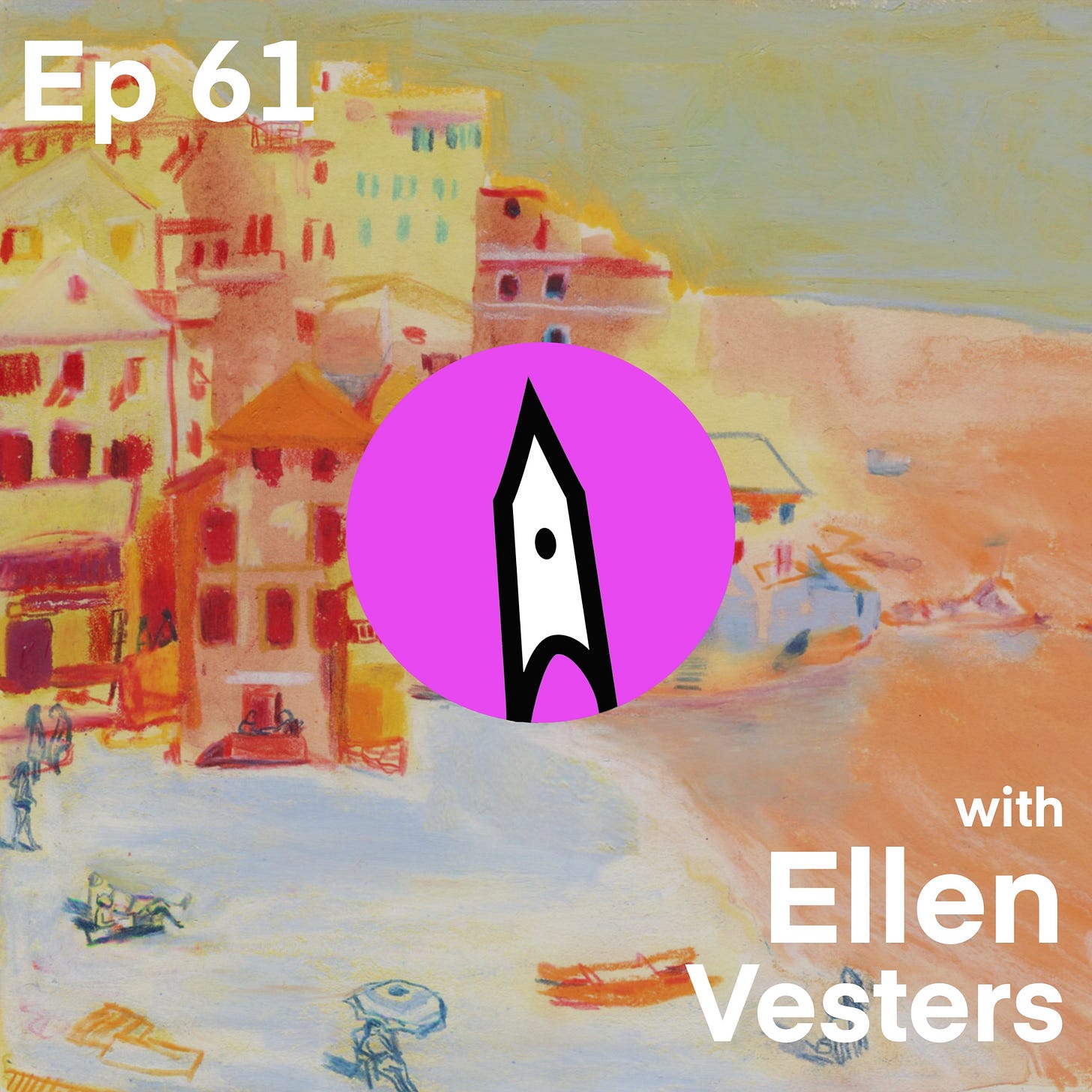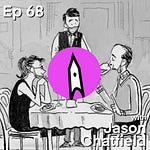Dear listener,
I am pleased to present this exciting new episode of the SneakyArt Podcast. It was recorded soon after my visit to the Netherlands last summer, so the conversation is a little dated. The major update is that Ellen’s students, who were then in the first module of their course, are now at the end of their year-long program. Congratulations to them!
I hope you enjoy the episode.
If you like the work I do to put together these episodes, support it by becoming a SneakyArt Insider. Insider support helps me commit to making more episodes - a long process of finding new guests, researching topics, having long form conversations, and finally editing and producing the episodes for listeners.
Becoming an Insider is also a way to be in the loop with latest developments around the show, including the chance to pose questions to upcoming guests!
Utrecht-based sketcher, illustrator and educator, Ellen Vesters speaks about the design-thinking approach to life and all the things she does. After practicing as a psychologist, and getting an MA in Illustration, Ellen founded the Venster Academy to teach art and illustration. Nishant also shares the story of how he accidentally became an artist while trying to become a writer after quitting his PhD program in Neuroscience. If you have wondered about taking a big leap in your life, this conversation will give you some ideas!
📲 Follow Ellen’s work on Instagram and check out her website.
🏫 Visit the Venster Academy.
🎙 Listen to Ellen and Nishant’s conversation while sketching in Utrecht, Netherlands.
There's this saying in Dutch, like, don't put your head above the grain, or the mowing field, because it will be cut off. That's from my part of the country. So as soon as I would put my head a bit up, I would be cut off.
Ellen explains growing up “wanting to be weird” in a place where individual expression was not encouraged.
So I was trying to illustrate. My whole life is one big procrastination from actually illustrating actually, because I thought like, oh yeah, I also need the money because I had a house, I needed to pay a mortgage. So I set up a concept store. I had a teaching job. And I was illustrating in that store and I didn't illustrate that much.
Ellen speaks about the circumstances in which she first heard about an MA in Illustration at Cambridge.
Design thinking says, do not think of a product that you think is right for a group of people, but talk to the people you are developing it for. Do your research, but also speak to people. Try out stuff, be flexible, change when your people change, when your target group changes, um, to not be super fixed on one thing.
Ellen shares how design thinking helped her create the curriculum for Venster Academy.
It was going to be a novel. It wasn't art. So the art only happened very randomly from wanting to have those little drawings in my books, which would tell a part of the story. And I needed to draw them better because I was just terrible at drawing. So, uh, I started drawing from observation.
Nishant shares the story of how he ‘accidentally’ became an artist.
I don't like working at my desk. I don't like doing revisions and drafts. I just like to do it in one go... And all of this is urban sketching and it just perfectly suited my temperament.
Nishant speaks about how urban sketching happened to suit his way of working.
So I put on the glasses and I looked at the wall that was, I think, to me it was red, and I put the glasses on and suddenly I saw neon pink.
Ellen speaks about being colourblind and trying filtered glasses at a museum.
The following episodes were referenced during the conversation:
🎙 Listen to Ep 53 with Amy Stewart
🎙 Listen to Ep 32 with Emma Carlisle
🎙 Listen to Ep 26 with Anna Wilson
🚦The Japanese did not have a name for the colour green.
Thank you, dear listener, for your time and attention. I would love to hear what you thought of this episode!












